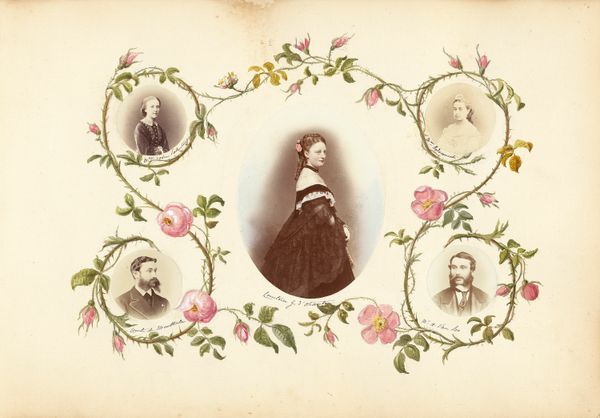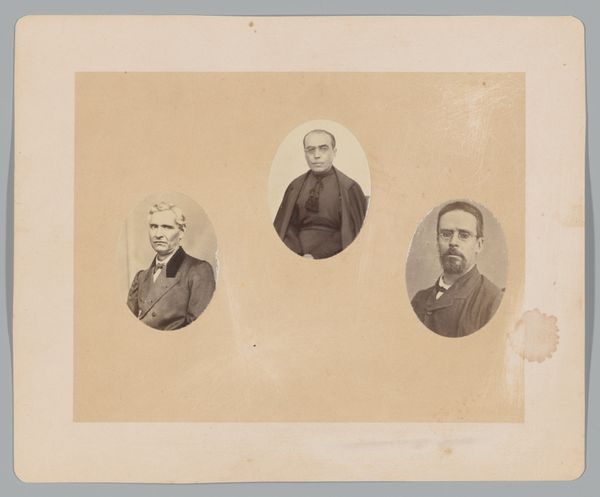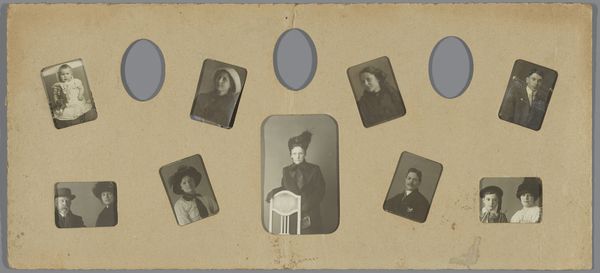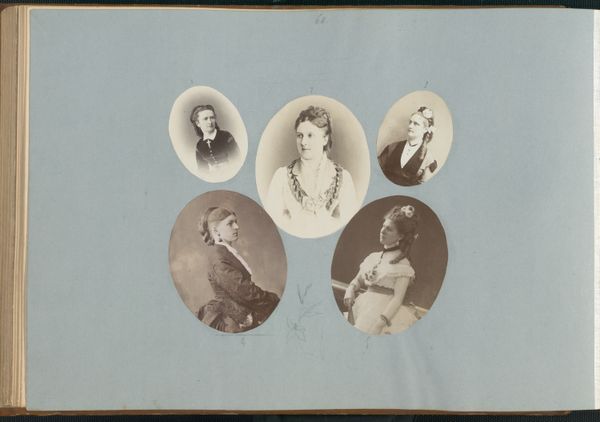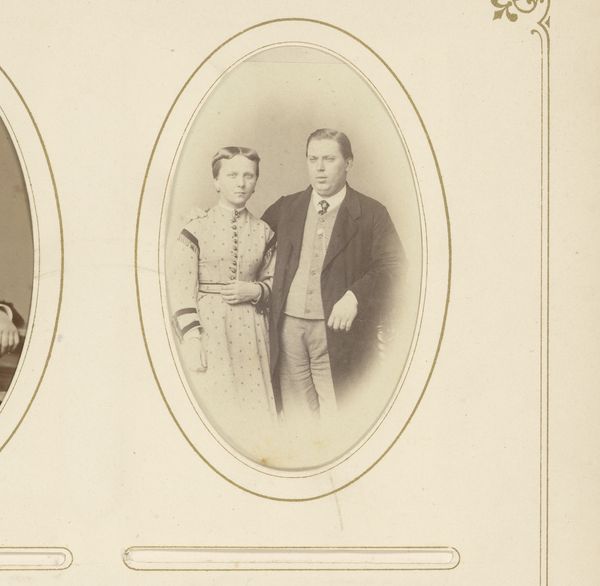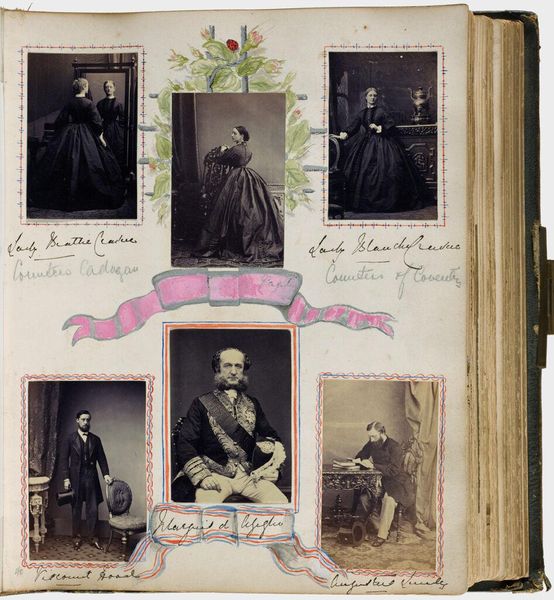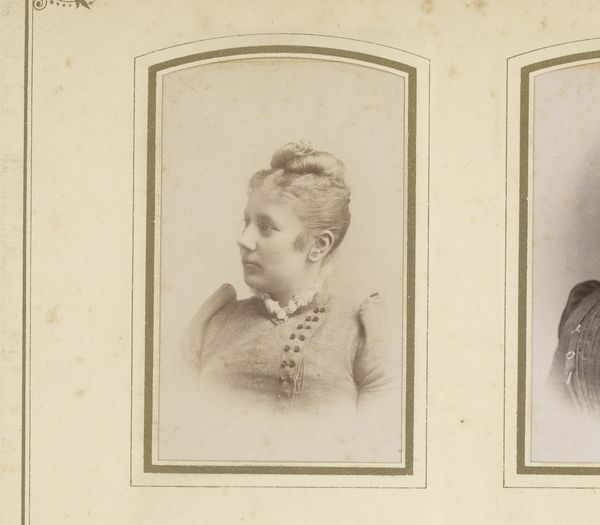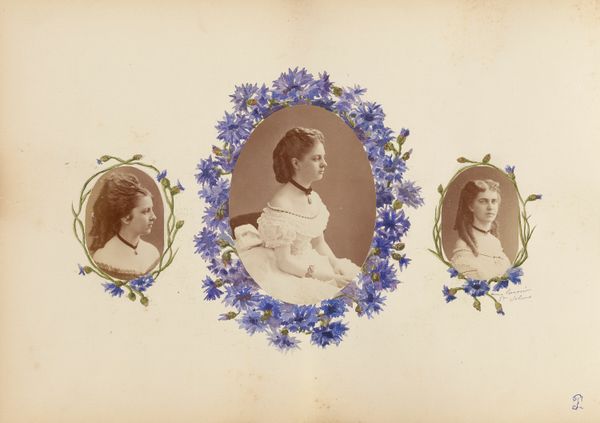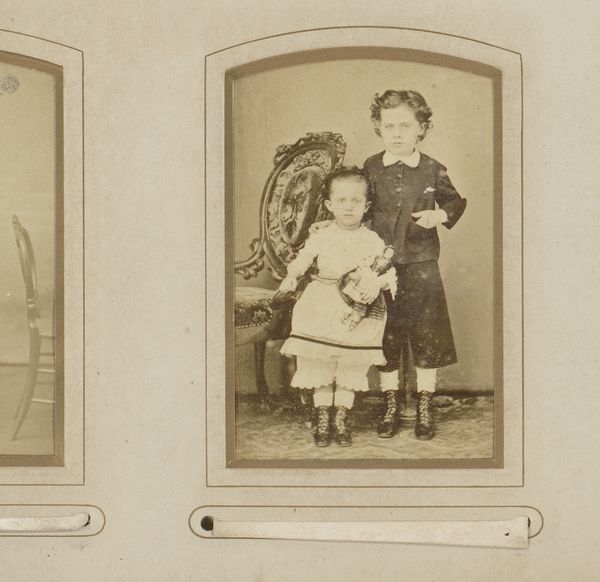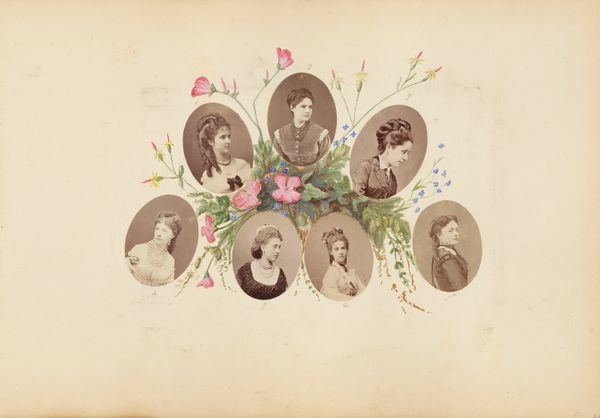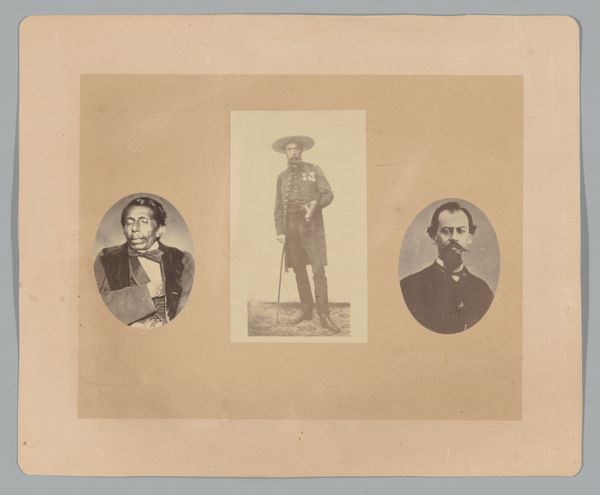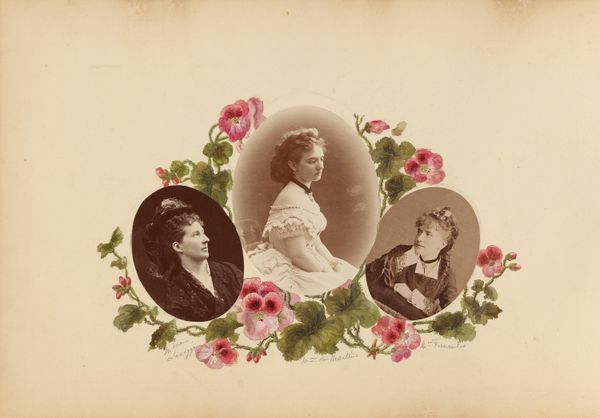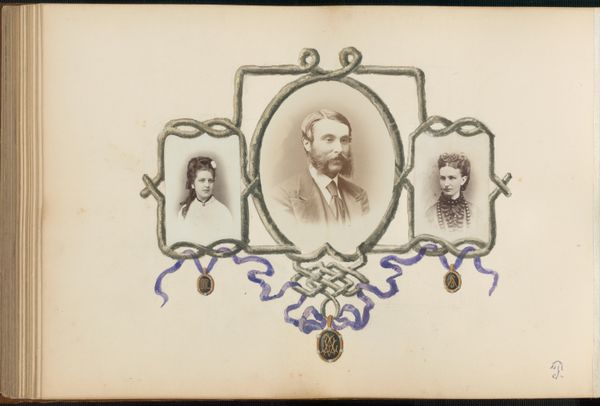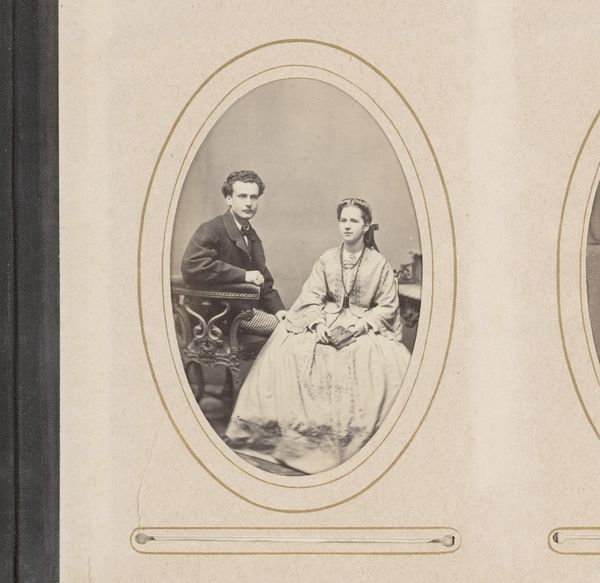
photography, albumen-print
#
portrait
#
16_19th-century
#
photography
#
group-portraits
#
france
#
albumen-print
Dimensions: 29.2 × 41.9 cm
Copyright: Public Domain
This is a page from 'The Madame B Album', a photographic work by Marie-Blanche Hennelle Fournier made in France. Arranged in a decorative configuration, the sepia toned images create a kind of family portrait. The photographic album emerged as a popular format during the mid-19th century, reflecting evolving social practices around memory, identity, and representation. Produced in the wake of technical innovations that made photography cheaper and more accessible, albums embodied the democratizing potential of the medium. While albums could serve as intimate records of personal life, they also became tools for shaping social narratives, reinforcing class distinctions, and promoting imperial ideologies. By studying the Madame B Album, we can gain insights into the social, cultural, and institutional factors that shaped the production and reception of photographic art in 19th-century France, using resources such as census records, genealogical databases, and period publications to better understand its significance.
Comments
No comments
Be the first to comment and join the conversation on the ultimate creative platform.
